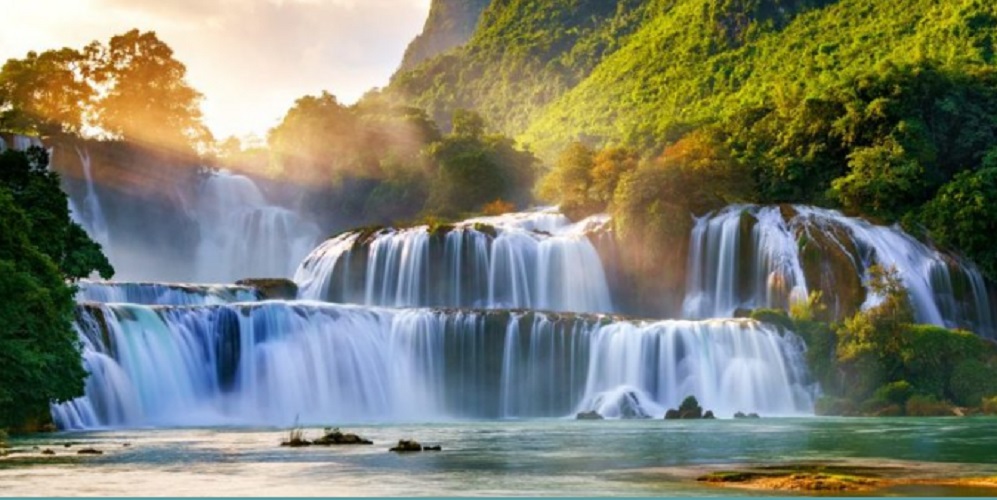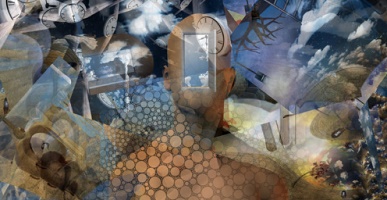What is the water?
We explain what water is and what its composition is. What is it for and what is its importance. Also, what is drinking water.
-
What is the water?
Water is a liquid substance devoid of smell, taste and color , which exists in a more or less pure state in nature and covers a significant percentage (71%) of the planet Earth’s surface. In addition, it is a fairly common substance in the solar system and the universe , although in the form of steam (its gaseous form) or ice (its solid form).
On our planet, water is contained in the seas and oceans (96.5%) , in glaciers and polar ice caps (1.74%), aquifer deposits and permafrost (1.72%) and the rest (0, 04%) distributed among lakes, moisture soils , atmospheric steam, reservoirs, rivers and in the body of the same living beings .
Water is indispensable for life as we know it, and within it the first life forms of the world took place . It has also occupied a central place in the imaginary of human civilizations, usually attributed to some deity or as the mythical flood with which the gods devastate the wayward cultures . It was also considered one of the four elements of nature.
On the other hand, the planet’s water is subject to a natural cycle known as the hydrological or hydrological cycle , in which liquid waters evaporate by the sun and rise to the atmosphere in gaseous form, then condense in the clouds and they rush back to the ground like rain. This circuit is vital for the climatic and biological stability of the planet.
-
Water composition

A water molecule contains only two elements: one oxygen atom and two hydrogen (H 2 O) , covalently linked. This was discovered in 1782 thanks to Henry Cavendish, since from ancient times water was thought of as an element. It is the universal solvent, since most substances can dissolve in it (except hydrophobic, lipid soluble ).
Water is highly adhesive (which is why it dips things), due to the polarity of its molecules, capable of up to four hydrogen bonds with surrounding atoms or molecules. It is also the reason that so many things dissolve well in the water.
Finally, water is an excellent conductor of electricity and heat , except in the case of pure water, whose absence of minerals and ions make it an electrical insulator and a diamagnetic substance.
-
Water function
Water fulfills vital functions on the planet and in the different ecosystems , aquatic or not, whether as a vital medium, nutrient transport or basic input for plant photosynthesis . Similarly, in the human body it fulfills the following vital roles:
- It constitutes the vital means for most of the body’s cells .
- It transports dissolved substances and composes a huge percentage of blood and other transport substances.
- It allows the excretion of waste, both in urine and feces, sweat and other excretions.
- Maintains homogeneous body temperature and allows cooling.
- It provides electrolytes and minerals essential for the electrical functioning of the organism.
On the other hand, the large bodies of water in the world allow human recreation (such as beaches), they serve as an input to numerous industries and as an input for daily cleaning, among many other functions of interest.
-
Importance of water

The massive presence of liquid water on the planet is one of its main differences from neighboring planets and is what allowed the birth and flowering of life . Recall that the first steps of evolution occurred at the microscopic level in the seas.
On the other hand, water, ice, steam and its hydrological cycle maintain climatic and atmospheric stability , allowing the cooling of the planet, which receives sunlight daily. It also hydrates the soils, making them fertile for plant life and for agricultural activity , and keeps circulating residual substances that, sooner or later, are distributed in less harmful amounts in the environment .
-
Drinking water
Drinking water is known to everyone who is fit for human consumption , both for drinking and for preparing food or meals. There are maximum values of pH , minerals, salts and microorganisms that distinguish drinking water from unfit for consumption. This means that drinking water is low, compared to large bodies of non-potable water, such as the sea or the rain.
Luckily there are water purification initiatives that combat the constant flow of toxic substances and pollutants that human beings throw into the large bodies of water, product of industry or urban life . Desalination, ozonation, irradiation and other purification mechanisms are responsible for this.





